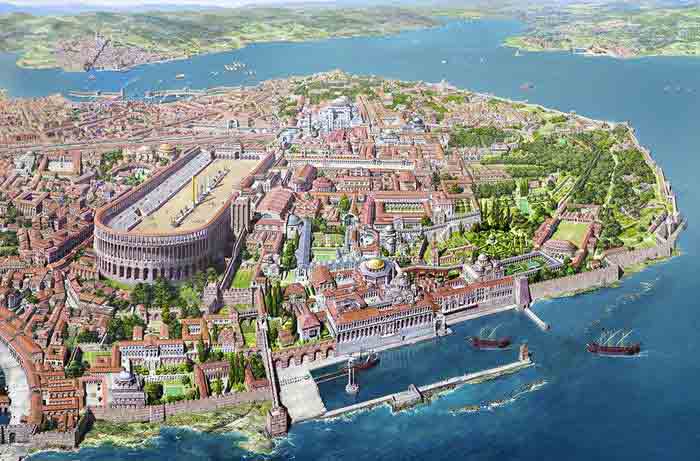From Public to Imperial
Establishment of the Imperial Palaces
Historical accounts from Ahmed Aşıkî, Dursun Bey Künhü’l-ahbâr, and Tayyarzade Ata Bey highlight the construction of the Sultan ramparts, featuring the “Gate of the Empire” behind St. Sophia, alongside structures like the tiled Kiosk and the Sultan’s stable. The palace built within these ramparts in 1478 became known as the Imperial New Palace, while the one in Beyazit was termed the Imperial Old Palace. Over time, the New Imperial Palace extended towards the sea and eventually earned the name Topkapi Palace, reflecting its association with cannons placed along the shore to greet visiting foreign fleets Evolution of State Treasury and Succession under Sultan Mehmet the Conqueror.
Transfer of the Treasury
Following the completion of Topkapi Palace, the Ottoman Treasury was relocated from the Castle of Seven Towers to its new residence. However, historical documents specifying the exact date of this transfer have yet to be discovered, leaving this aspect of Ottoman history shrouded in mystery Private Tour Guide Turkey.
Evolution of Financial Organization
Since the inception of the Ottoman State, financial affairs, including the treasury, were administered under the concept of “The Public Treasury,” symbolizing a financial institution accessible to the public. Rooted in Islamic principles, this terminology harkened back to practices observed during the time of Prophet Muhammad and the Four Caliphs, underscoring its significance to Ottoman governance.
Expansion and Reorganization
The conquest of Istanbul and subsequent territorial expansions in Europe and Asia spurred rapid growth within the Ottoman State, necessitating a reevaluation of state institutions. The term “Amire,” signifying imperial or state-related, was incorporated into the names of various institutions, including the Imperial Mint, Imperial Arsenal of Ordnance and Artillery, and Imperial Maritime Arsenal. Consequently, the State Treasury transitioned from being known as the Public Treasury to the Imperial Treasury, aligning with the evolving nature of Ottoman governance under Sultan Mehmet the Conqueror and his successors.
The transition from the Public Treasury to the Imperial Treasury marked a significant evolution in the financial organization of the Ottoman Empire. As the empire expanded and modernized, the terminology and structures associated with its treasury reflected broader shifts in governance and administration. Though certain aspects of this transition remain shrouded in historical obscurity, ongoing research and exploration may shed further light on this transformative period in Ottoman history.








